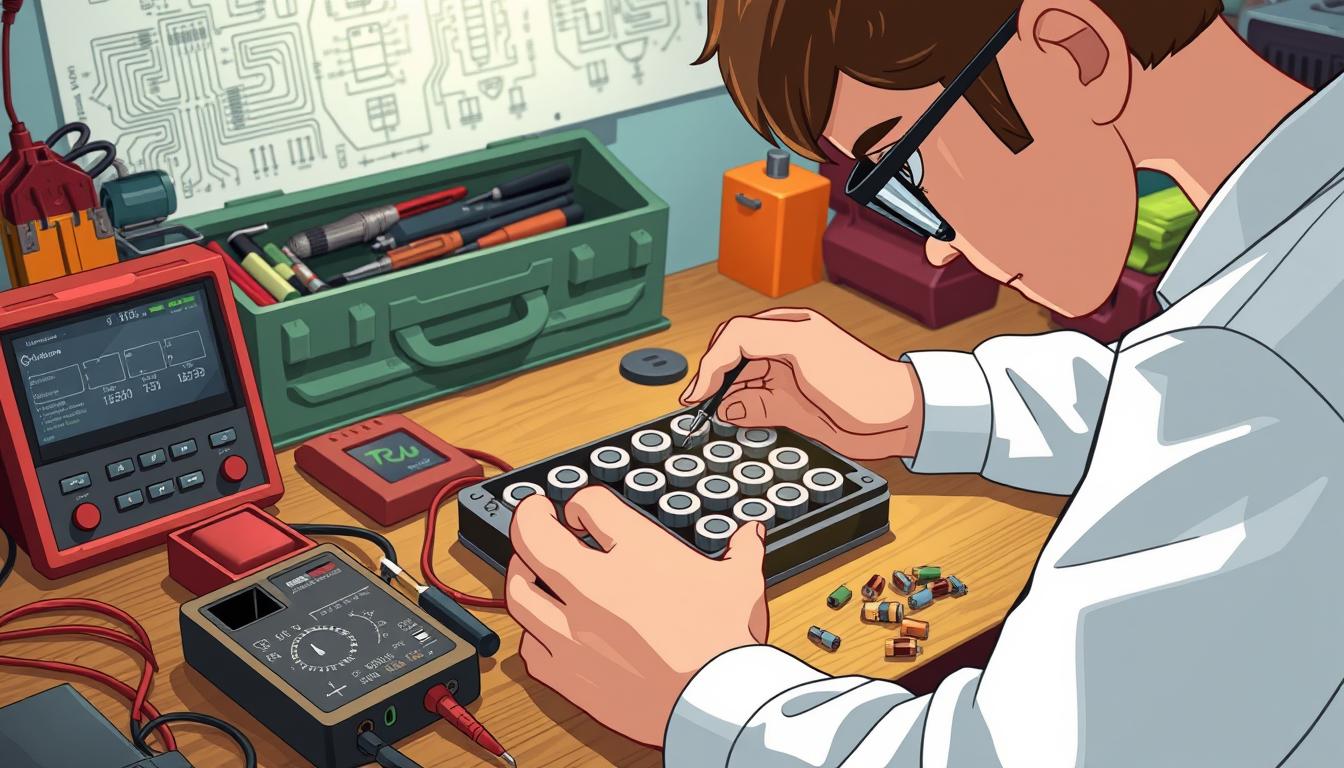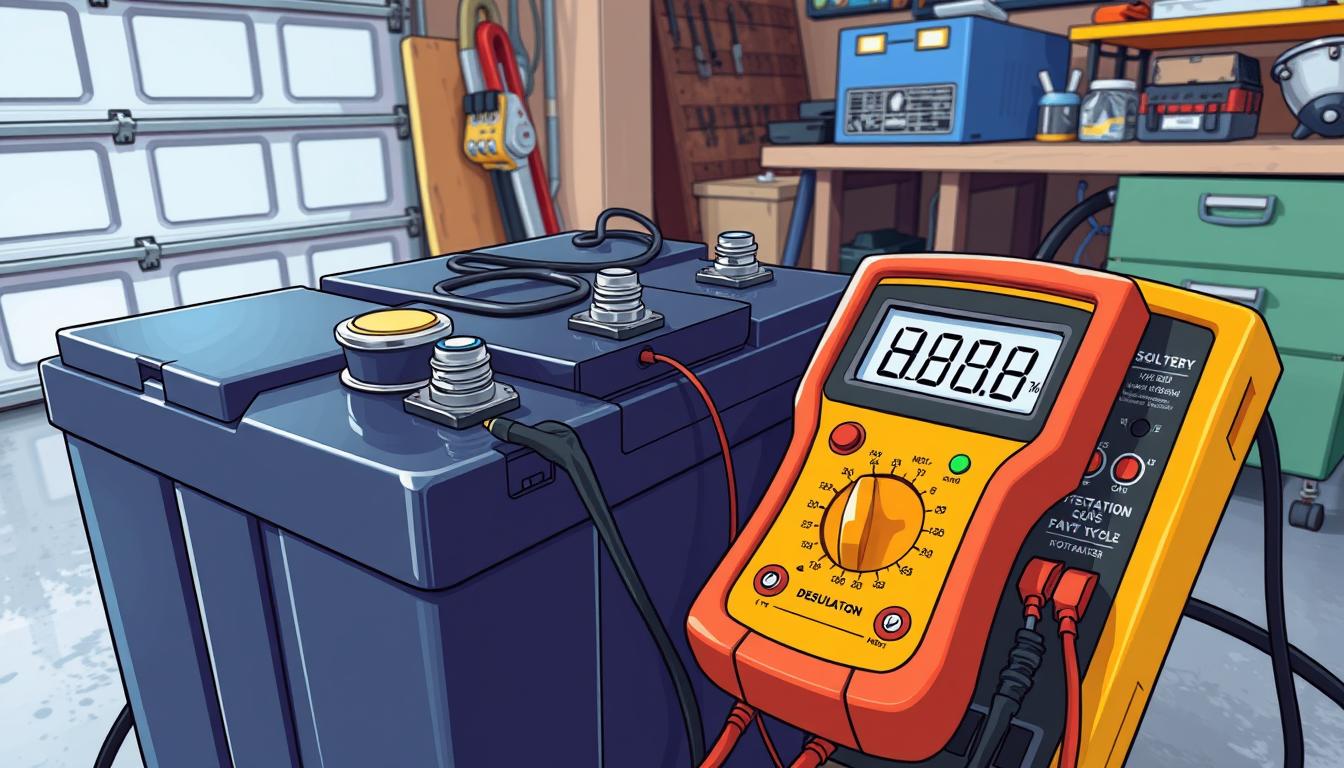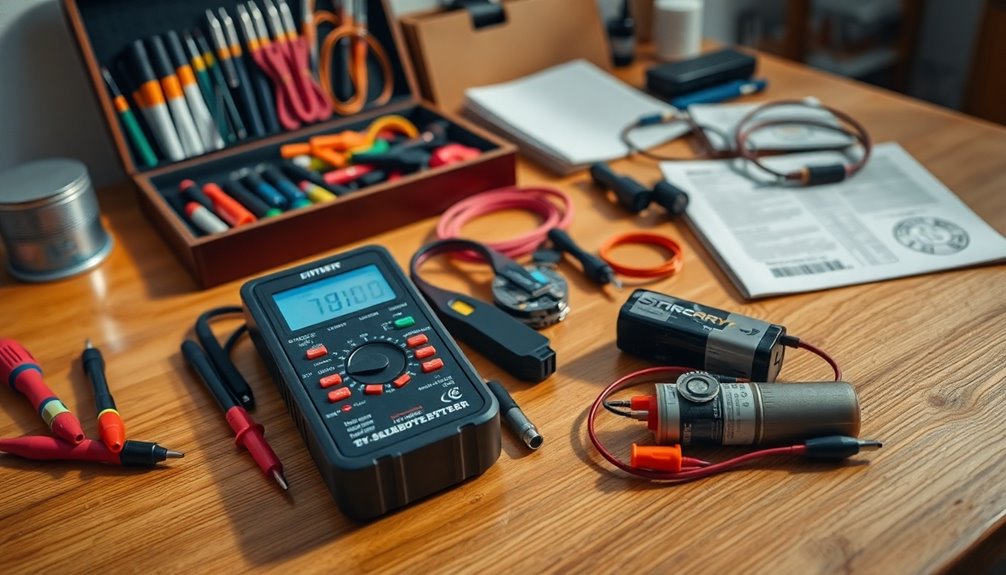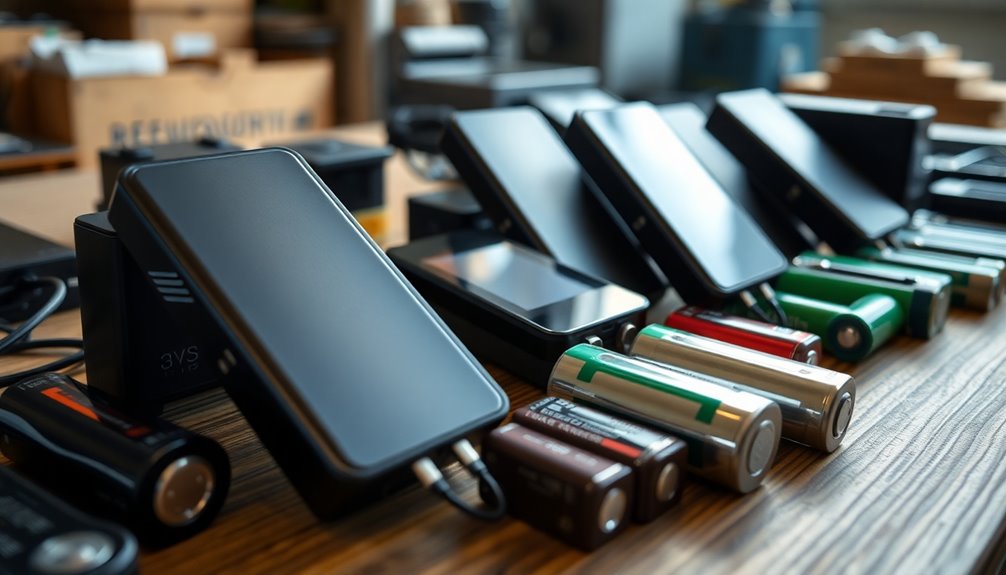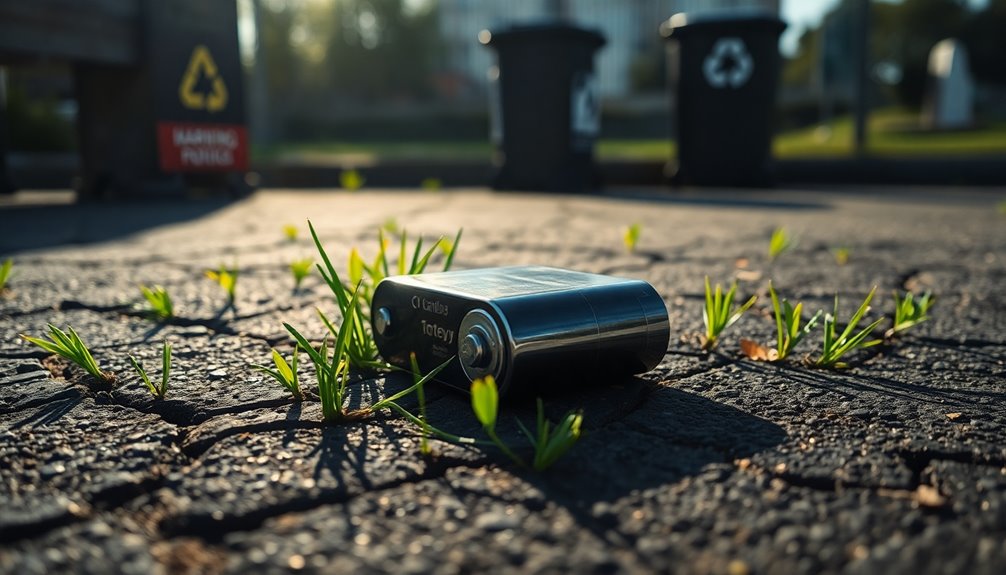Did you know that reconditioned car batteries can be restored one to three times, potentially saving you hundreds of dollars on replacements1? As devices become an integral part of our daily lives, managing dead batteries can often leave you frustrated and spending more. Learning how to recondition batteries with a charger not only extends their lifespan but also supports a more sustainable lifestyle by reducing waste. When you dive into battery reconditioning, you will discover it involves various techniques including using specialized charger modes that can dissolve sulfate crystals and restore capacity.
This guide is designed to empower you with the step-by-step methods to revive old battery and keep them functioning smoothly. From essential tools to troubleshooting tips, you’ll find everything you need to become proficient in battery maintenance. Whether you’re a seasoned DIY enthusiast or a beginner, understanding how to recondition battery with charger can save you money, improve battery health, and increase your confidence in handling battery-related issues.
Key Takeaways
- Reconditioned batteries can save you money on replacements.
- Learning how to recondition battery with charger helps extend their lifespan.
- Battery reconditioning is eco-friendly and reduces waste.
- Specific tools are required for successful battery reconditioning.
- Understanding different battery types is crucial for effective reconditioning.
Understanding Battery Reconditioning
Battery reconditioning represents an effective method of reviving batteries to their optimal functioning state. This process allows you to avoid the costly alternative of buying new batteries while employing various battery restoration techniques that can significantly extend battery life. Gaining a clear understanding of battery reconditioning is essential for both personal and environmental benefits.
What is Battery Reconditioning?
Battery reconditioning refers to the process of restoring batteries that have lost their charge capacity and performance due to prolonged use. This technique can rejuvenate various types of batteries, making them usable again and postponing the need for replacements. By applying the right battery maintenance tips, you can prolong battery life and enhance your devices’ efficiency.
Benefits of Reconditioning Batteries
Engaging in battery reconditioning provides several advantages. It can save significant amounts of money by extending the life of existing batteries rather than replacing them. This is particularly true as reconditioned batteries often demonstrate improved performance and efficiency2. Furthermore, it contributes positively to the environment by reducing waste and minimizing the need for new battery production2. Reconditioned batteries maximize operating times between charges, enhancing the overall user experience3.
Types of Batteries You Can Recondition
Most rechargeable batteries, such as lead-acid, nickel-cadmium (NiCd), nickel-metal hydride (NiMH), and lithium-ion, can be reconditioned. Each type has its specific methods that may include desulfation and equalization for lead-acid batteries, while lithium-ion batteries benefit from cell balancing and cycle charging. Understanding the appropriate battery restoration techniques allows you to tackle various battery types successfully.
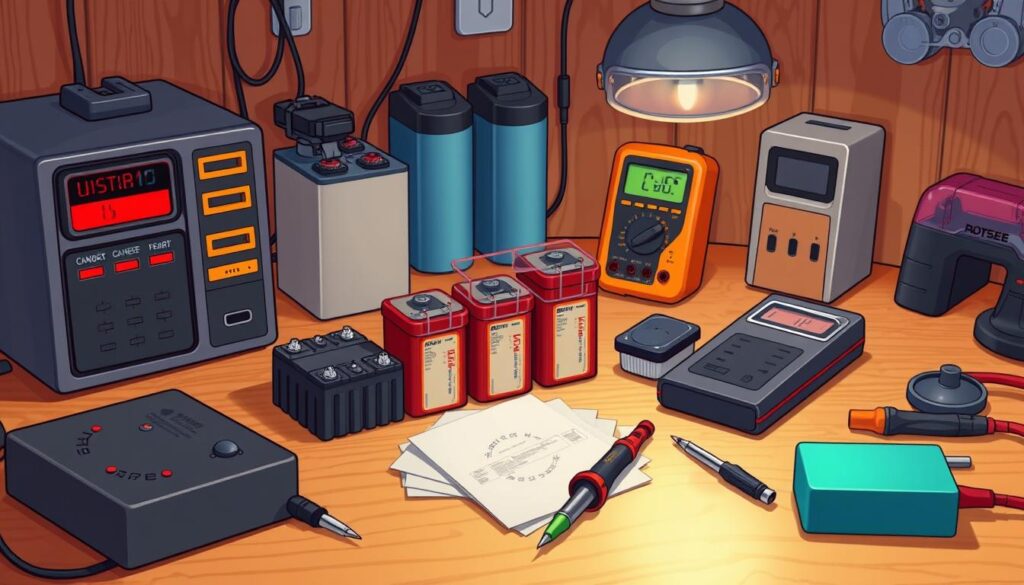
Signs indicating that a battery needs reconditioning include reduced runtime, slow charging, overheating during charging or discharging, and visible physical damage such as swelling or leaking2. Awareness of these indicators is pivotal in maintaining battery health.
Tools You Need for Battery Reconditioning
Reconditioning batteries requires specific tools and equipment to ensure effective and safe operation. Utilizing the right essential equipment for the job not only enhances the success rate but also safeguards you during the process. Familiarizing yourself with these tools will prepare you for a smoother reconditioning experience.
Essential Equipment for the Job
Key components necessary for battery reconditioning include:
- Smart Charger: Tailored for your battery type, a charger for battery reconditioning is indispensable.
- Multimeter: To measure voltage and check the health of each cell.
- Desulfator: Particularly important for lead-acid batteries to reverse sulfation.
- Solar Panel: A 40-watt solar panel is ideal for reconditioning; larger panels can also be used effectively4.
- Voltmeter: Necessary for monitoring battery voltage during the reconditioning process4.
Selecting the Right Charger
Choosing the appropriate charger for your specific battery type is crucial. A smart charger can adapt to different charging needs, helping to prevent damage. It ensures that you maintain the battery’s original capacity while reconditioning. Selecting one that offers the correct voltage and amperage will support better results during the reconditioning cycle. The right charger not only helps to restore your battery but also keeps you safe as you work.
Safety Gear for Battery Work
Prioritizing safety is vital when working with batteries. Proper safety gear for battery work should include:
- Protective eyewear: To shield your eyes from potential acid splashes.
- Gloves: Insulated gloves protect your hands from both acid and electrical shocks.
- Apron: A durable apron can guard against spills and debris.
Always ensure your work area is well-ventilated and free of flammable materials. Following these precautions will help you avoid accidents while reconditioning batteries.

When equipped with the right tools and safety gear, you can efficiently and safely embark on the journey of battery reconditioning542.
Step-by-Step Guide to Recondition Your Battery
Reconditioning a battery is a practical way to extend its life and enhance performance. Begin by carefully preparing the battery, which involves cleaning the terminals and checking the voltage with a multimeter. Proper voltage readings are essential; a healthy lead-acid battery should show a reading around 12.6V for optimal reconditioning potential6.
Preparing the Battery
Start your DIY battery reconditioning project by cleaning the battery terminals with a wire brush to remove any corrosion. Inspect the battery for physical damage; if any exists, proceed with caution or consider replacement. Next, use a multimeter to check the battery’s voltage. A reading between 10V and 12.6V indicates it may be suitable for reconditioning6.
Charging the Battery Properly
Charging the battery properly is crucial. Connect the battery to a compatible charger and monitor it during the charging cycle to prevent overheating. Lead-acid batteries can benefit from specific techniques such as desulfation. This process allows for the removal of sulfates, improving the electrolyte levels and boosting charging capacity, thus making it perform like new6. Keep in mind, a reconditioned battery may show improved longevity, enhancing its performance by an additional year or two compared to a standard lifespan of 3-5 years7.
Testing the Battery’s Performance
After reconditioning, testing battery performance is vital. You can perform a stress test by engaging high beams to assess the battery under load. A reconditioned battery should maintain a reading of about 9.6V under load, indicating successful revitalization6. Remember, batteries that have lost 30-40% of their original capacity are typically good candidates for reconditioning7.
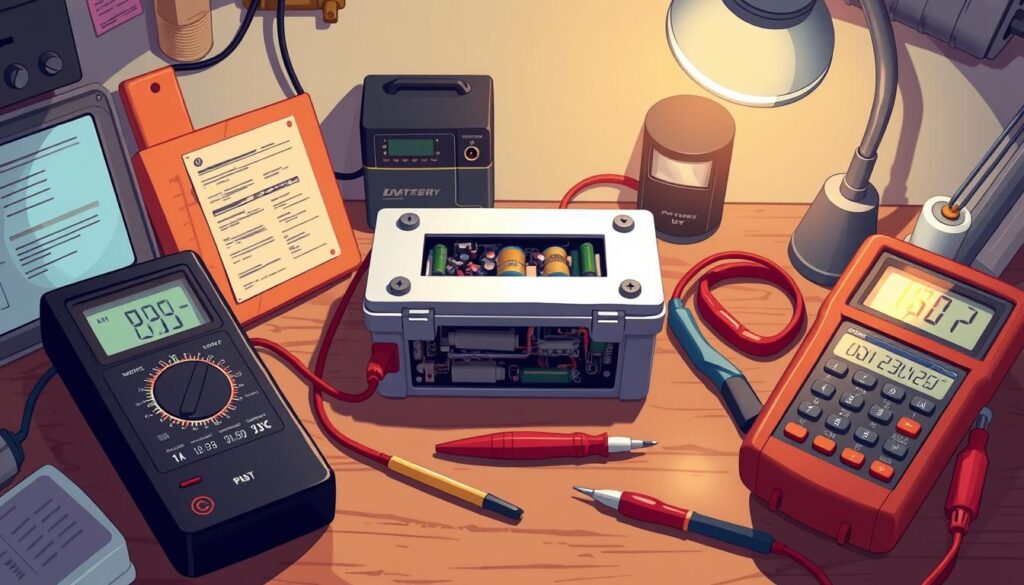
Following this step-by-step approach provides the best chance for successfully revitalizing your battery, ensuring it performs efficiently moving forward. With proper care and maintenance, reconditioned batteries can prove to be a cost-effective solution for various applications7.
Common Problems and Solutions
When working with batteries, you may encounter a variety of challenges that can affect their performance. Recognizing these issues early on is essential for effective troubleshooting and battery maintenance tips. This section will guide you through identifying common problems and solutions you might face during the reconditioning process.
Identifying Battery Issues
A clear sign of a failing battery is when voltage drops below the optimal levels. For example, a battery showing a voltage of 11.8 volts indicates that it has only about 30% capacity8. Additionally, you should be aware of other symptoms, such as external swelling or leaking, which could point to irreversible damage.
Troubleshooting Charging Problems
Charging issues can arise, often due to using an incompatible charger or faulty connections. It is vital to ensure you are using a battery reconditioning charger that supports the specific battery type, whether it’s lead-acid, NiMH, or Li-ion9. Keep track of the battery’s voltage readings; a well-functioning battery should retain a voltage above 12 volts when tested with a 12v bulb for an hour8. Understanding these critical aspects assists in troubleshooting charging problems effectively.
When to Seek Professional Help
Sometimes, despite your best efforts in troubleshooting charging problems, a battery may show persistent issues, indicating permanent damage. If a battery continues to exhibit low voltage readings or fails to charge even after using a suitable charger, it is wise to seek professional help. Remember, knowing when to consult an expert is crucial for effective battery maintenance.
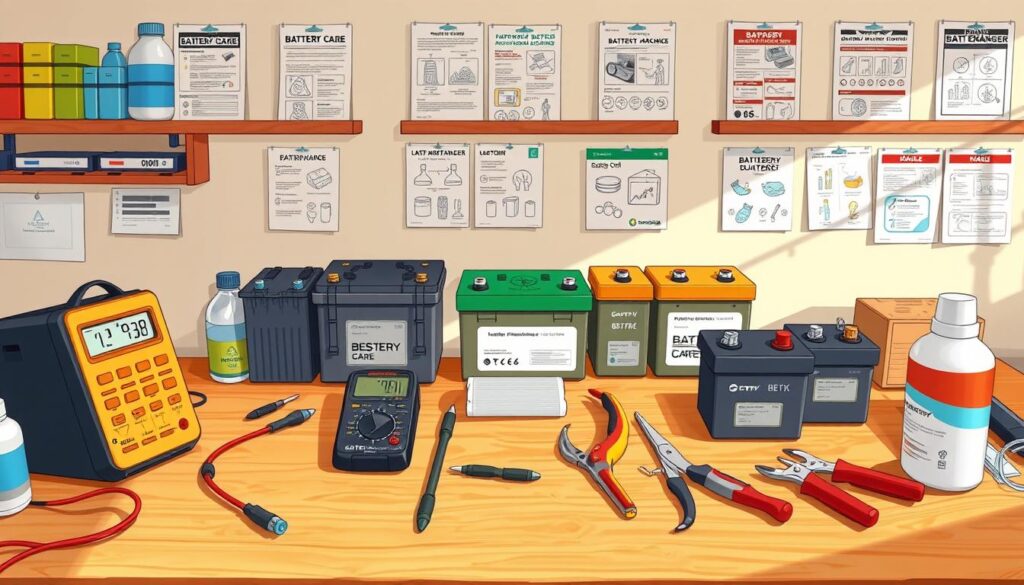
Tips for Maintaining Your Reconditioned Battery
To extend the lifespan of your reconditioned battery, following effective battery maintenance tips is essential. Regularly clean the terminals to prevent corrosion, and check the voltage levels to gauge performance accurately. When monitoring battery health, conducting periodic tests can help you catch issues before they escalate, ensuring that your battery remains in optimal working condition.
Best Practices for Battery Care
Engaging in best practices for battery care will significantly impact your battery’s longevity. After reconditioning, it’s advisable to keep the battery fully charged, showing voltages between 11.5 to 12.6 volts for effective functioning4. Using a trickle charger for a couple of days post-reconditioning can also be beneficial, as this technique has a reasonable success rate10.
Monitoring Battery Health
Pay attention to your battery’s health through consistent monitoring. Shifts in voltage can signify potential issues; a voltage reading of 10V indicates that a battery is flat, while anything below 8V could be cause for concern10. Using a hydrometer can provide insight into the battery’s electrolyte levels, allowing you to track performance effectively.
Long-Term Storage Recommendations
For long-term storage, remember to charge your battery fully before placing it in a cool, dry space. It’s crucial to check the battery periodically to maintain its charge level; this strategy not only preserves the battery for future use but also enhances its overall performance when needed11. Keeping these maintenance tips in mind ensures that you get the best out of your reconditioned battery for years to come.
FAQ
How do I know if my battery needs reconditioning?
What tools do I need for reconditioning my battery?
Can I recondition any type of battery?
How long does battery reconditioning take?
Is it safe to recondition a battery at home?
What should I do if my reconditioned battery isn’t holding a charge?
How can I extend the life of my reconditioned battery?
Source Links
- https://carfromjapan.com/article/car-maintenance/recondition-a-car-battery-by-5-step-method/ – How To Recondition A Car Battery In 5 Easy Steps
- https://www.ufinebattery.com/blog/battery-reconditioning-explained-a-comprehensive-guide/ – What You Should Know About Battery Reconditioning
- https://www.wvbandcoms.com/blogs/blog/reconditioning-batteries?srsltid=AfmBOorrpyLB0SgsvqDCJKc6hLTeiS2VVCGZX5IDpN7QwNvSu458age5 – Why You Need to Recondition Two-Way Radio Batteries
- https://www.instructables.com/Restoring-Automotive-Batteries/ – Restoring Automotive Batteries
- https://www.instructables.com/Battery-Reconditioner/ – Battery Reconditioner
- https://www.theengineeringchoice.com/how-to-recondition-a-car-battery/ – How to Recondition a Car Battery at Home?
- https://www.autonationmobileservice.com/i/blog/battery-reconditioning/ – Car Battery Reconditioning (A How-To for LFA Batteries)
- https://www.instructables.com/How-to-revive-old-lead-acid-batteries/ – How to Revive Old Lead Acid Batteries
- https://www.linkedin.com/pulse/battery-reconditioning-charger-revive-your-batteries-today-hasan-urtmc – Battery Reconditioning Charger: Revive Your Batteries Today!
- https://www.audizine.com/forum/showthread.php/898516-Anyone-use-a-battery-charger-reconditioner-to-salvage-a-battery – Anyone use a battery charger / reconditioner to salvage a battery?
- https://www.garagejournal.com/forum/threads/automotive-battery-reconditioning.507513/ – Automotive battery reconditioning


